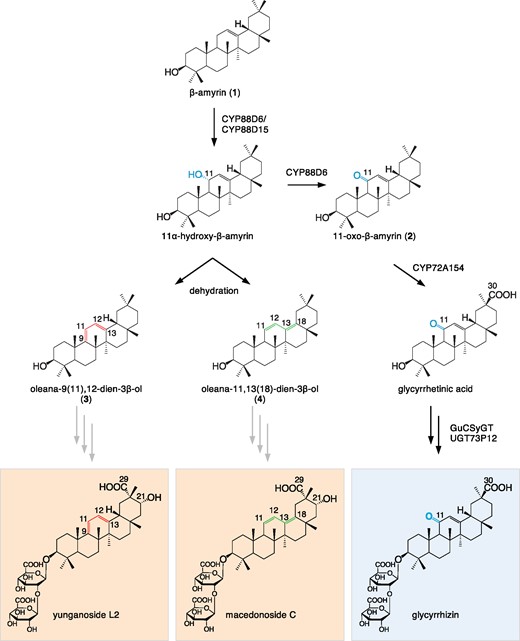Our research team collaborated with School of Engineering at Osaka University, Center for Sustainable Resource Science, etc., to reveal the molecular mechanism of which determines the rate of production of glycyrrhizin by several plant species, including the well-known “licorice,” in the genus Glycyrrhiza.
This research was published on Plant & Cell Physiology, and was nominated as Editor-in-Chief’s Choice and one of the Research Highlights.
Glycyrrhizin is a compound contained in the root parts of Glycyrrhiza. Its sweetness level is estimated to be over 150x higher than that of table sugar, and has medicinal values such as anti-inflammation.
Glycyrrhizin is produced in high quantity by some species of Glycyrrhiza, but not by all. Up until now, the reason for this difference was unknown.
In this research, several species of Glycyrrhiza with different glycyrrhizin production rate were studied of the enzyme involved in glycyrrhizin production. It turns out, that a slight difference in the activity of this enzyme differentiates how much glycyrrhizin is produced.
It may be possible to alternatively produce plant-derived high function compounds through activating the enzyme originating from the relatives of licorice that do not produce glycyrrhizin!
For the abstract of the paper, visit here.
Fig. Saponin chemodiversity in Glycyrrhiza species and associated biosynthetic enzymes. Black arrows indicate known biosynthetic enzymes, and gray arrows indicate uncharacterized biosynthetic enzymes.

